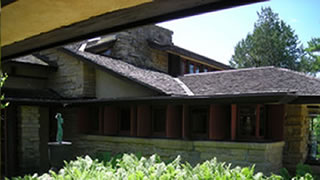The goal is to build more libraries than Andrew Carnegie. That’s 2,510. They don’t have to be big or built of marble or be guarded by massive stone lions. They just have to have books and people who want to read them.
 The Little Free Library movement started in 2010 in Hudson, Wisconsin, with a tiny library that resembled a one-room schoolhouse. It could hold about 20 books and was built in memory of teacher and book lover June A. Bol by her son, Todd Bol. The concept was simple: take a book; leave a book. Grow literacy like a flower garden in your own front yard. Place a bench by your library so on a summer evening a neighbor and his grandchild can stop by, grab a book, and sit down right then and there and read it.
The Little Free Library movement started in 2010 in Hudson, Wisconsin, with a tiny library that resembled a one-room schoolhouse. It could hold about 20 books and was built in memory of teacher and book lover June A. Bol by her son, Todd Bol. The concept was simple: take a book; leave a book. Grow literacy like a flower garden in your own front yard. Place a bench by your library so on a summer evening a neighbor and his grandchild can stop by, grab a book, and sit down right then and there and read it.
This simple idea took off and now there are Little Free Libraries in more than 40 states and 20 countries. You can get plans for building your own little library at the Little Free Library website and see a diverse collection of tiny bibliothéques. They are works of art and as individual as they come.
No Library Cards, No Fines
I love the idea of sharing books with abandon, of no one keeping records or collecting fines. I search for libraries wherever I go, and I delight when I find them in unsuspecting corners, like an old general store in Vermont or a historic lodge in Montana. Someone cared enough about the summer readers or vacationing hikers to pull together an often well-worn collection.
Back when Rubbertoes, my partner, and I were geocacheing every weekend, we actually started our own lending library in a cache by a Minnesota lake. We called it Maud’s House after my first book and stocked it with copies of said book carefully protected in waterproof bags. Geocacheing operates on the same principle as the Little Free Library: take something and leave something. With GPS in hand, our visitors took a book, enjoyed a pleasant hike around a lovely lake, and left behind anything from Mardi Gras beads to a McDonald’s toy. It was a fair trade. Some of them read the book and brought it back for the next reader, while others maybe passed it on, leaving it in some other cache so it could travel the world (like some kind of ceramic gnome).
In my novel Book of Mercy, protagonist Antigone Brown created her own library, Bookhenge, in response to the censorship in her community:
While the rest of Mercy chained holiday wreaths to their doors and cursed contrary Christmas tree lights, Bookhenge exploded in a spirit of giving. No one kept track of the books; no one supervised what someone else read; no one mutilated the books they didn’t like or agree with; no one plucked the words they found distasteful from the pages with razor blades. There was something pristine about the library Antigone built, something that shone like a beacon that child after child followed to a new land.
Whether you create your library to foil the censors or just to see the smiles on the faces of the kids in your neighborhood, don’t ever think you are doing a small thing. If you can instill one other person with a love for reading, and that person impacts another person, you could start an avalanche. And we need one. According to Statistic Brain, 42% of college students will never read another book after they graduate.
That’s nearly half the population missing out on love and adventure and zombies. Yes, I’ll take readers who love zombies over no readers at all. So let’s give Andrew a run for his money. Build a library.
___________________
I often include impromptu libraries in my books. Check out Book of Mercy and Up There. Both feature women building libraries and spreading reading in their communities.






It’s not formal, but we have a few shelves in a classroom with a cabinet where our 12 teachers can bring books they no longer want to keep at home or take something to read and bring it back, or not. I read quite a few of them. I also have a couple of co-workers with whom I share all my print books, though since I received my Kindle for Christmas last year I don’t buy as many of those. Looking at Amazon.com a lot more frequently now, I’m absolutely thrilled to have discovered some new authors, one of those being you. I’m waiting with bated breath to see what lovely, quirky characters you’ll come up with next! Thank you!
Thanks, Martha. When I was writing Book of Mercy, the idea of creating your own library seemed so foreign to me. But in actuality, there are libraries everywhere, in all sizes, with and without rules. I find that idea delightful. Although you may not be able to share books on the Kindle as easily as you do your paperbacks, you can spread the word about a great eBook (which is also what you do when you lend someone your favorite print book). Thanks again for posting a review of Book of Mercy. Happy reading this summer.
Is this a global campaign? Can I bring this idea to my hometown in the Philippines???
Rosario, I don’t know if the group in the USA is big enough to reach out globally. But there is nothing keeping you from using their model to start a program in the Philippines. You can order templates and information for building your own libraries from the Little Free Library site: http://littlefreelibrary.org/. I wish you well and hope you build libraries all over the Philippines.